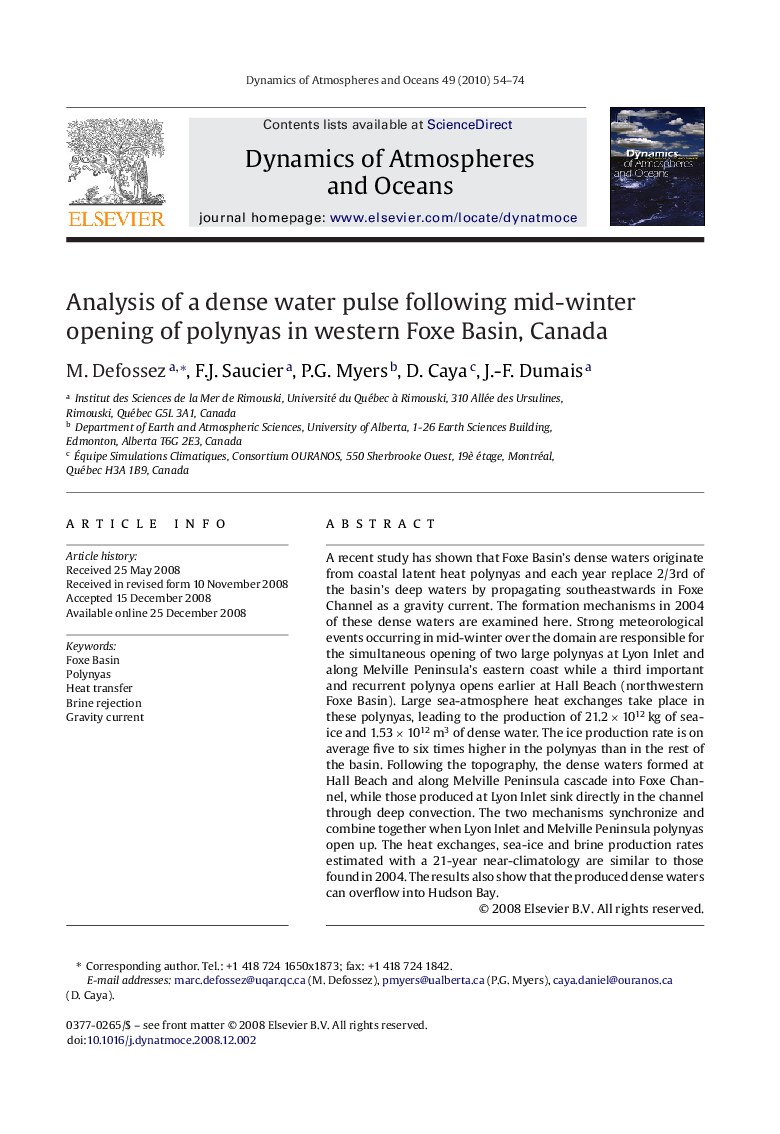| Article ID | Journal | Published Year | Pages | File Type |
|---|---|---|---|---|
| 4674218 | Dynamics of Atmospheres and Oceans | 2010 | 21 Pages |
A recent study has shown that Foxe Basin's dense waters originate from coastal latent heat polynyas and each year replace 2/3rd of the basin's deep waters by propagating southeastwards in Foxe Channel as a gravity current. The formation mechanisms in 2004 of these dense waters are examined here. Strong meteorological events occurring in mid-winter over the domain are responsible for the simultaneous opening of two large polynyas at Lyon Inlet and along Melville Peninsula's eastern coast while a third important and recurrent polynya opens earlier at Hall Beach (northwestern Foxe Basin). Large sea-atmosphere heat exchanges take place in these polynyas, leading to the production of 21.2 × 1012 kg of sea-ice and 1.53 × 1012 m3 of dense water. The ice production rate is on average five to six times higher in the polynyas than in the rest of the basin. Following the topography, the dense waters formed at Hall Beach and along Melville Peninsula cascade into Foxe Channel, while those produced at Lyon Inlet sink directly in the channel through deep convection. The two mechanisms synchronize and combine together when Lyon Inlet and Melville Peninsula polynyas open up. The heat exchanges, sea-ice and brine production rates estimated with a 21-year near-climatology are similar to those found in 2004. The results also show that the produced dense waters can overflow into Hudson Bay.
